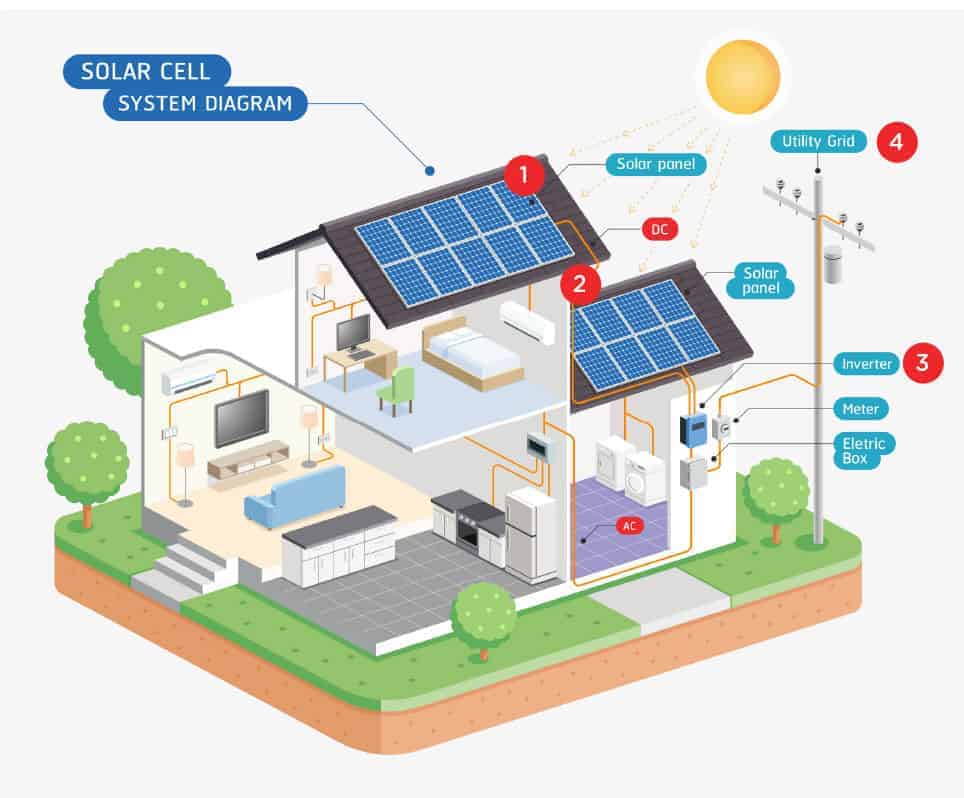How Does Solar Work?
An Introduction to Solar Power
As the name suggests, solar power is a method of obtaining electricity by converting light from the sun. But how does electricity actually comes into existence from sunlight? The answer lies within the Photovoltaic Effect.
The Photovoltaic Effect was first discovered in 1839 by a French physicist named Edmund Bequerel. What is the Photovoltaic Effect? First, let’s break down the term “Photovoltaic”. “Photo-” means light and “-voltaic” refers to something that has to do with electricity. In Edmund Bequerel’s research, he discovered that certain materials would produce a small electric current when you exposed them to light, causing the Photovoltaic Effect to take place. This is the principle adopted by PV solar panels. Solar Photovoltaic (PV) is the technology that converts sunlight (solar radiation) into direct current electricity. The 1960s saw the first practical application of PV solar panels, which were used on space crafts. As technology improves throughout the years, the panels have become smaller and cheaper. Today, solar panels are affordable and efficient enough for residential and commercial use.
According to Edmund Bequerel’s discovery, there are certain materials that will produce electric current when they are exposed to light. Therefore, let us get a closer look into the solar panels and find out what are the materials that make up your solar panels and how do they come together to produce electric current.

A solar panel consists of a layer of silicon cells, a metal frame, a glass casing unit, and wiring to transfer electric current from the silicon. When sunlight hits a silicon cell, it ‘excites’ the electrons and gives them enough energy to be set in motion, initiating a flow of electric current. The direct current (DC) electricity is then fed into a solar inverter which converts into alternating current (AC) electricity. This electricity can then be used in your home to run appliances or exported back to the grid when it’s not needed.

- The silicon cells in the Solar Photovoltaic (PV) panels absorb solar radiation.
- The sun’s rays interact with the silicon cells, causing electrons to move and creating a flow of electric current.
- Wires capture and feed the direct current (DC) electricity into a solar inverter. DC electricity will then be converted into alternating current (AC) electricity for your consumption.
- The inverter will ensure your home always uses your own solar production first, only accessing additional energy from the grid when your own supply is not enough. Any excess solar PV energy can be sold back to the grid on a “unit-to-unit” offset basis.
